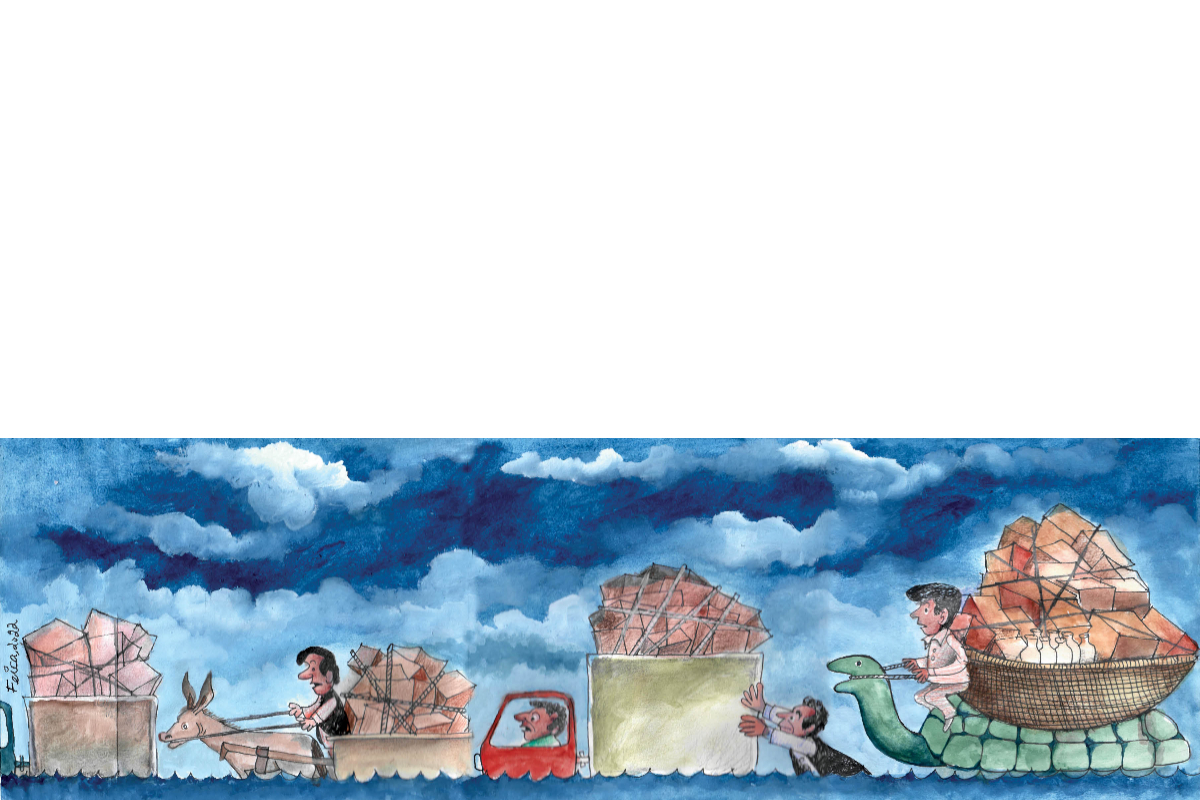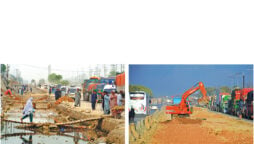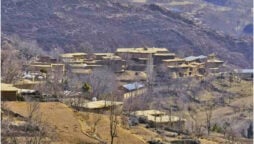
Climate change affecting coastlines
Sea has pocketed 30 million acres of land on the coastline
Karachi: Floods wreaked havoc in Sindh during August, September and October this year. It displaced thousands and caused a huge economic loss. Like other parts of Sindh, the coastal areas were adversely affected owing to heavy rains, subsequent floods and sea intrusion. Around 1,17355 were displaced in the Sujawal district alone and some 300 villages came under water with Jati and Shahbunder being the worst affected Talukas. It was not the first time that the coastal region was battered by the adversity of climate change. Earlier, this region was affected by a cyclone in 1999, heavy showers of rain in 2003 and flash floods in 2010 and 2015.
The aftermath of the floods was even more dreadful, as families taking shelter in tent cities set up along the main Thatta-Sujawal road could not get basic facilities. It resulted in issues of malnutrition among mothers, internal diseases among women and skin diseases among children.
A large number of cerebral malaria cases were reported from low-lying areas of districts Thatta and Sujawal following which an emergency was declared in both districts. Despite that its spread could not be curbed, especially in rural areas of Thatta. The Chief Minister of Sindh as well as the Prime Minister visited flood-affected areas of both districts and announced speedy rehabilitation of affected masses. They still await that. After the devastation of the floods, the process of distributing relief goods commenced in Sujawal; embezzlement was reported from Mirpur Bathoro Gharo and Jati but the district administration took no efforts to curb the irregularities.
Mirpur Bathoro’s revenue officials were found involved in the sale and shifting of relief goods. This incident, despite being vividly highlighted by the media failed to grab the attention of the authorities concerned.
Now people in these areas have started struggling to bring their life back on track without any concrete support from government functionaries. Some time back, a large number of villagers affected by recent floods, protested against the livestock department as well as the district government, accusing them of selling fodder. No action has been taken yet.
Pakistan has been a victim of climate change for years, but people are less aware of the destruction triggered by climate change in the coastal region of the country particularly in Thatta, Sujawal and Badin. History suggests that there was a large area and a seaport located near the Sujawal district known as Sokhi Bunder.
During the 18th century it was a busy hub of exporting goods but as time went by it completely came under seawater. Keti Bunder and Kharochan are also facing the same situation as a large area of these historical cities has been invaded by the sea.
This situation has occurred owing to the non-release of water in Kotri downstream as per the water accord of 1992 followed by unabated deforestation. Sea has so far pocketed more than 30 million acres of land in the coastline of the country.
Since the 1970s, the towns of Thatta and Badin, on the Indus coastal belt, have seen families migrating (an estimated 40,000 people) due to water shortages, seawater intrusion (which has rendered up to 1.2 million acres of land infertile), and extreme events like the cyclones of 1999 and 2005) to the neighbouring port city of Karachi. The Coastal region was once fertile, but environmental changes that have taken place during the past three decades have made it a desolate region with a large population of these areas migrating to different parts of the country in search of livelihood.
“Deforestation and lack of awareness among people about the importance of plantation have further aggravated”, said a senior journalist Muhammad Iqbal Khowaja, adding that Thatta and Sujawal were famous for their thick forests stretching over thousands of acres of land. Owing to the negligence of the forest department, the area of forests has shrunk. He further said, “mangroves are very important for the revival of environmental glory in the coastline, and in this regard, a bid was made by Bilawal Bhutto Zardari to plant 750,000 mangroves in Kharochan area of Thatta district in 2013, but owing to the inattentiveness of authorities concern the process of protecting the coastal environment through the plantation of mangroves and their preservation could not continue for a long time”. Senior Agronomist Obhayo Khan Khushik is of the view that the greed of local influential landlords has also added to the miseries of the coastal region as they have cultivated lands on natural routes of water, following which, the sea is not getting the required quantum of water. He proposed special legislation for preventing this practice.
Noor Muhammad Themore a local social activist and an official of Pakistan Fisher Folk Forum said that fishermen had suffered the most as a result of climate change.
“Sea has advanced into residential areas forcing people to migrate” said Themore, adding that 60 per cent of the fishermen community living in the coastal region for centuries had migrated to Dadu, Nawab Shah and Jamshoro because here the source of income for them had shrunk after wavered environmental changes in the region.
Senior Journalist and historian Zahid Ishaq Soomro revealed that 20 years back, there were several freshwater lakes in the Thatta and Sujawal coastline famous among those were Jim, Tal, Chubati, Kari and Khodi but, “sea swallowed them”, he further said that there were many species of fish such as Tenualosa Ilisha, locally called Pallah, Mrigal Carp called Morakhi in local parlance and,Labeo Rohita-Kurri that are now rarely found in this part of the country.
A fisherman, Amir Bux Dandal said that change in the atmosphere had deprived the coastal region of its natural beauty and owing to environmental degradation of the Indus delta, it would aggravate further.
The agricultural sector in this region has also undergone adverse changes as people have stopped cultivating bumper crops and vegetables including red sugarcane, turmeric crop and red rice owing to a shortage of adequate water. Special legislation, as well as strategy, is required on the part of the government to curb the adversity caused by climate change in the coastal region of Sindh.
The federal government is now very much concerned about catering to the challenge of climate change and it must give a special budget for restoring the lost beauty of the coastal region and making it an environmentally friendly place.
Catch all the Urban Insight News, Breaking News Event and Latest News Updates on The BOL News
Download The BOL News App to get the Daily News Update & Live News.












 Read the complete story text.
Read the complete story text. Listen to audio of the story.
Listen to audio of the story.